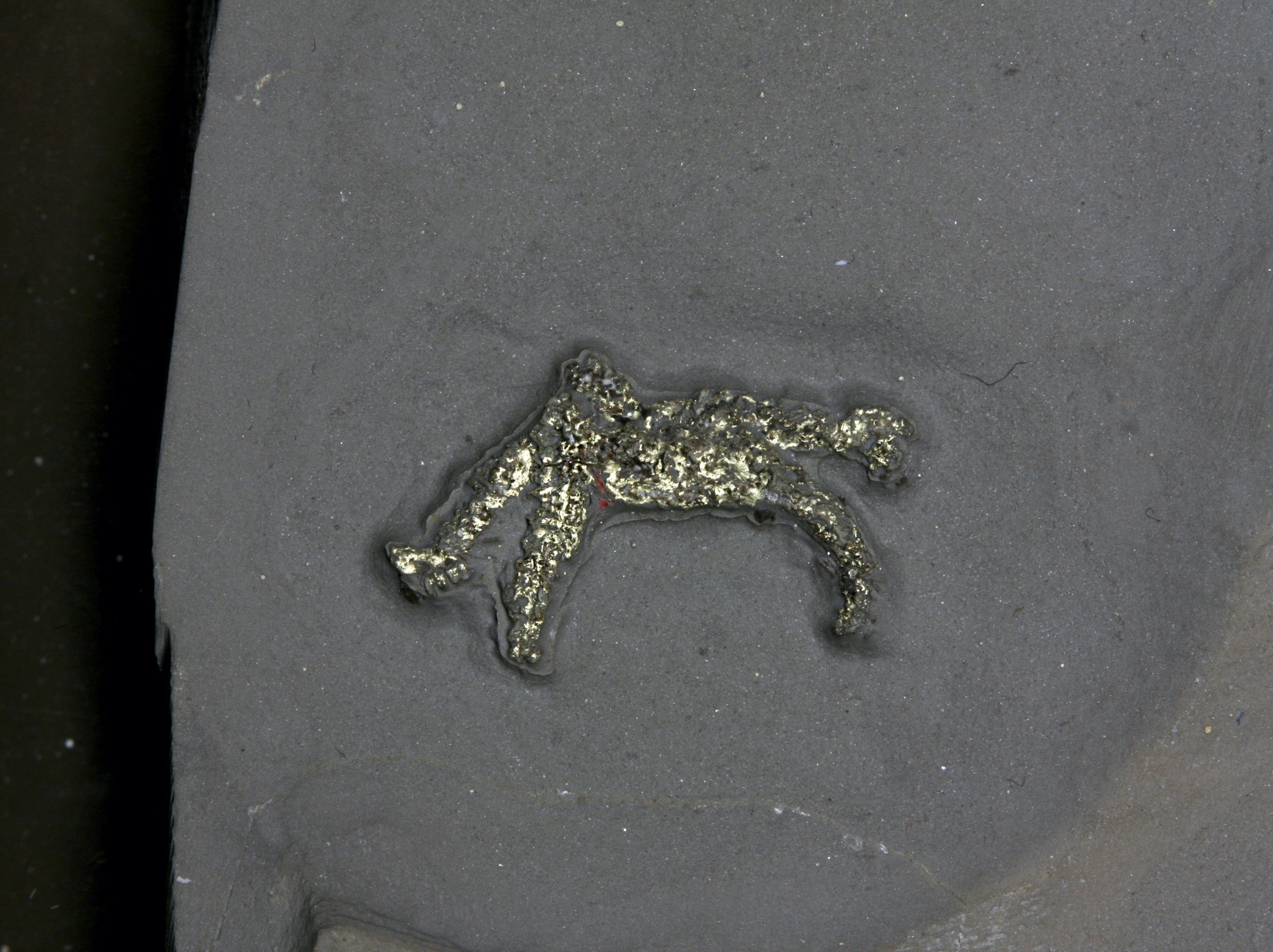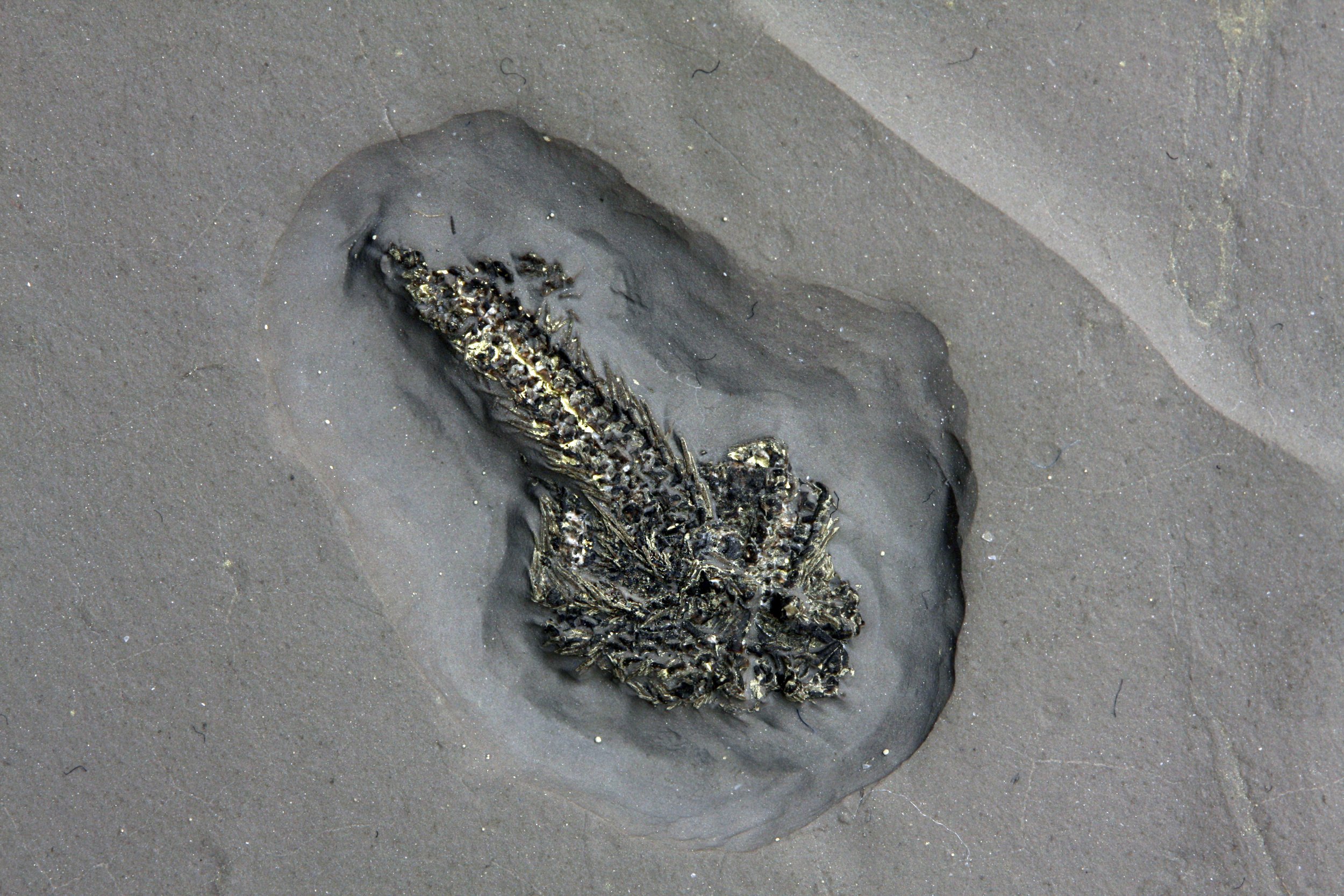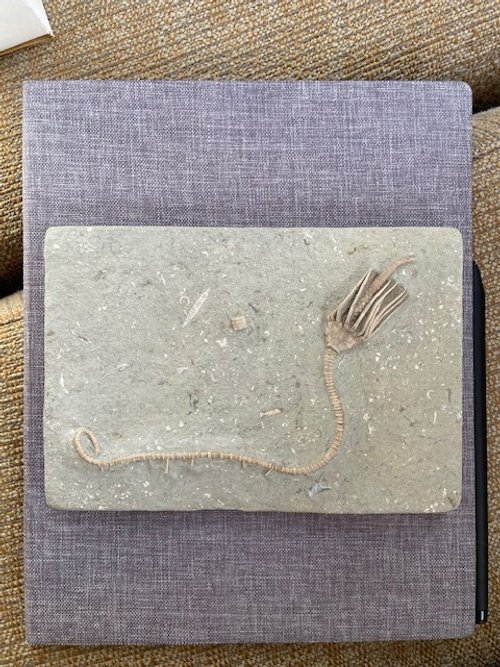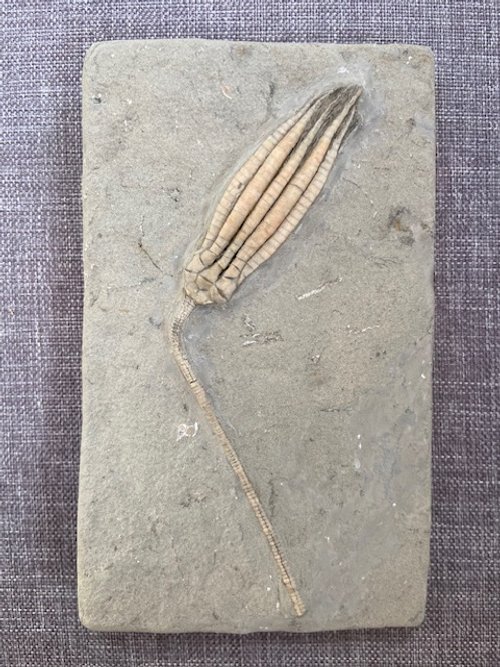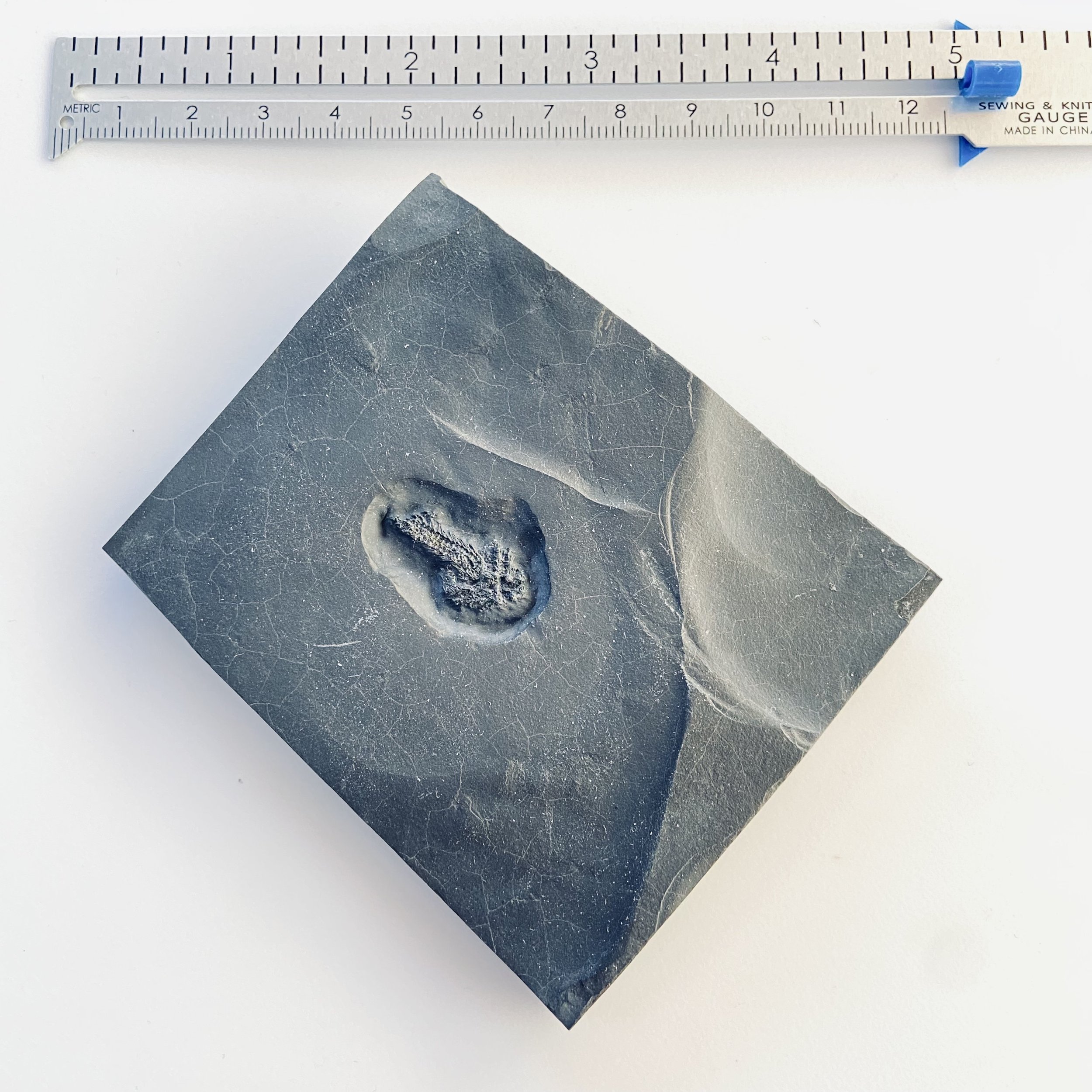Protasterid sp.
Vendor: Gold Bugs
SKU Number: SQ5847686
A beautiful example of a pyritized brittle star echinoderm Protasterid, from the Late Ordovician, Frankfort Shale, Beecher’s Trilobite Bed, Lewis County, New York.
A compressed and somewhat balled up, but rare example of this yet undetermined species of Protasterid ophiuroid found in the same layers that produce the pyritized Triarthrus trilobites with legs and antennae. Examples of echinoderms are extremely scarce. This specimen is pyritized and shows spines and evidence of tube feet.
Full dimensions are listed below.
Vendor: Gold Bugs
SKU Number: SQ5847686
A beautiful example of a pyritized brittle star echinoderm Protasterid, from the Late Ordovician, Frankfort Shale, Beecher’s Trilobite Bed, Lewis County, New York.
A compressed and somewhat balled up, but rare example of this yet undetermined species of Protasterid ophiuroid found in the same layers that produce the pyritized Triarthrus trilobites with legs and antennae. Examples of echinoderms are extremely scarce. This specimen is pyritized and shows spines and evidence of tube feet.
Full dimensions are listed below.
Vendor: Gold Bugs
SKU Number: SQ5847686
A beautiful example of a pyritized brittle star echinoderm Protasterid, from the Late Ordovician, Frankfort Shale, Beecher’s Trilobite Bed, Lewis County, New York.
A compressed and somewhat balled up, but rare example of this yet undetermined species of Protasterid ophiuroid found in the same layers that produce the pyritized Triarthrus trilobites with legs and antennae. Examples of echinoderms are extremely scarce. This specimen is pyritized and shows spines and evidence of tube feet.
Full dimensions are listed below.
Additional Information
Brittle Stars belong to the Phylum Echinodermata and includes crinoids, sea urchins and sea cucumbers. The first echinoderms appear in the Lower Cambrian period.
It has been suggested that he ancestor of all echinoderms was a simple bi-laterally symmetrical animal with a mouth, gut and anus. This ancestral organism adopted an attached mode of life with suspension feeding, and developed radial symmetry. Even so, the larvae of all echinoderms are bilaterally symmetrical, and all develop radial symmetry at metamorphosis. Like their ancestor, the starfish and crinoids still attach themselves to the seabed while changing to their adult form.

